Dinosaurs may be gone, but we’re learning new things about them every day. Scientists discover a new kind of dinosaur about once a week! And by using new technology, they can learn more from fossils now than they ever could before.
Here are three exciting discoveries from this new golden age of dinosaur science.
Raptor Makeover
Velociraptor is one of the most famous dinosaurs, but it’s turning out to have looked very different from how we’ve always imagined it.
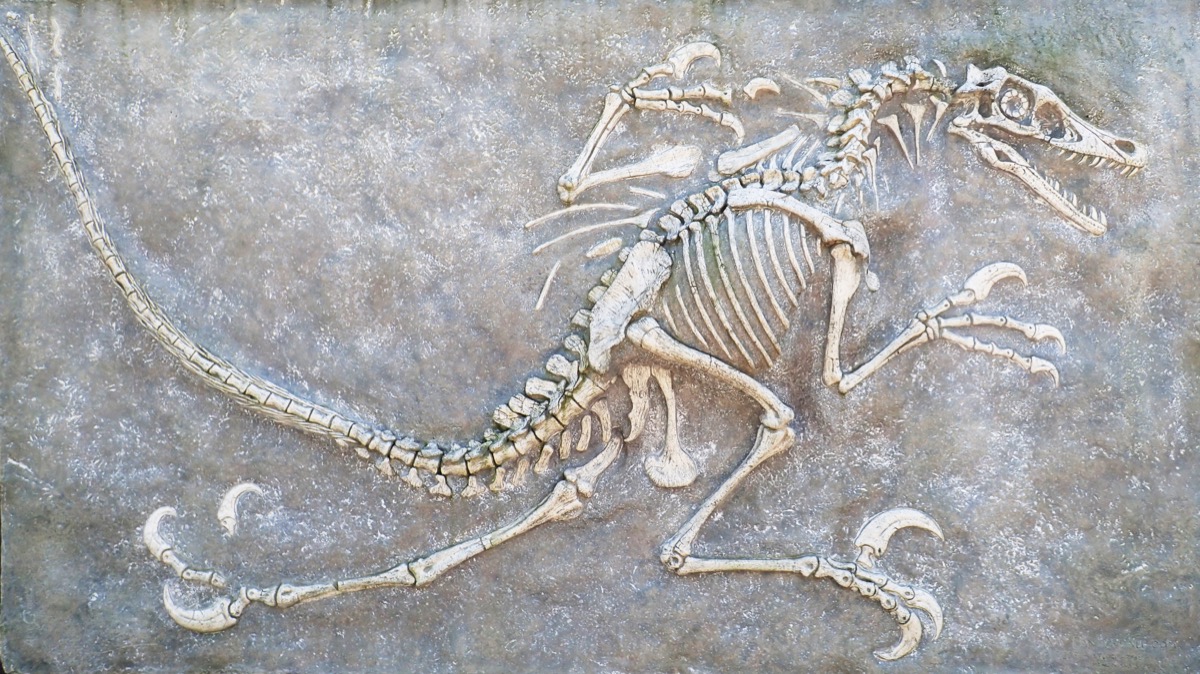
We’ve known for a long time that birds evolved from dinosaurs (in fact, birds are dinosaurs), and Velociraptor is one of the most birdlike of them all. This caused many scientists to wonder if it had feathers like a bird.
In the last twenty years, some spectacular fossils from China have shown that many kinds of dinosaurs were covered head to toe in feathers, including some of Velociraptor’s close cousins. As for Velociraptor itself, scientists noticed that it had a series of tiny bumps in a straight line along its lower arm bone. Many living birds have these tiny bumps too, and they mark the places where the wing feathers attach to the bone.
So not only did Velociraptor have feathers, it actually had wings! It couldn’t fly, of course, but it may have used its wings to help keep its balance while running, like ostriches do. Or maybe the wings were for showing off to other Velociraptors.
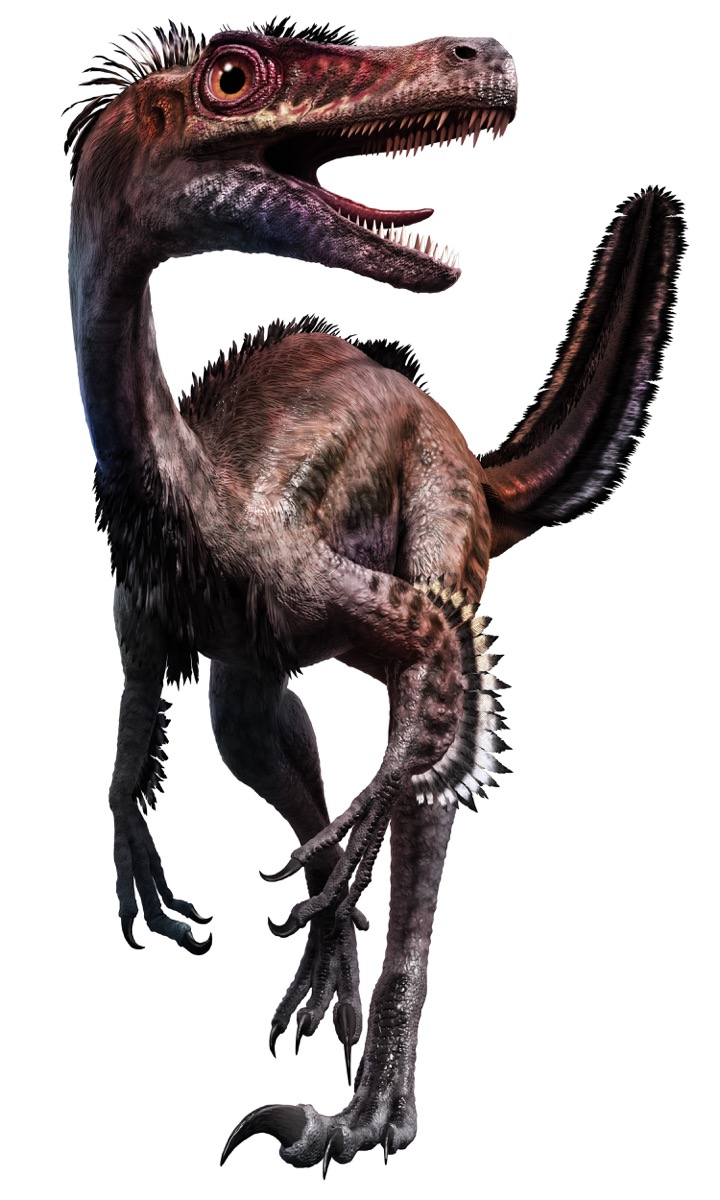
True Colours
We can learn a lot from a dinosaur’s bones: what it ate, how it moved, who its closest relatives were. But we can’t tell what colour it was, and scientists have always assumed that we would never know what colour dinosaurs were.
But not anymore! It turns out that if a dinosaur is fossilized in just the right way, you can see its skin as well as its bones. This was the case for a fossil of Psittacosaurus (“sit-ack-oh-sore-us”), an early relative of Triceratops (so early, in fact, that it didn’t have horns or a neck frill).
Scientists looked at Psittacosaurus’ skin under an electron microscope, and found tiny structures called melanosomes, which give animals their colours. Differently shaped melanosomes make different colours, and these ones were shaped like the ones found in brown animals today. So Psittacosaurus seems to have been mostly brown.
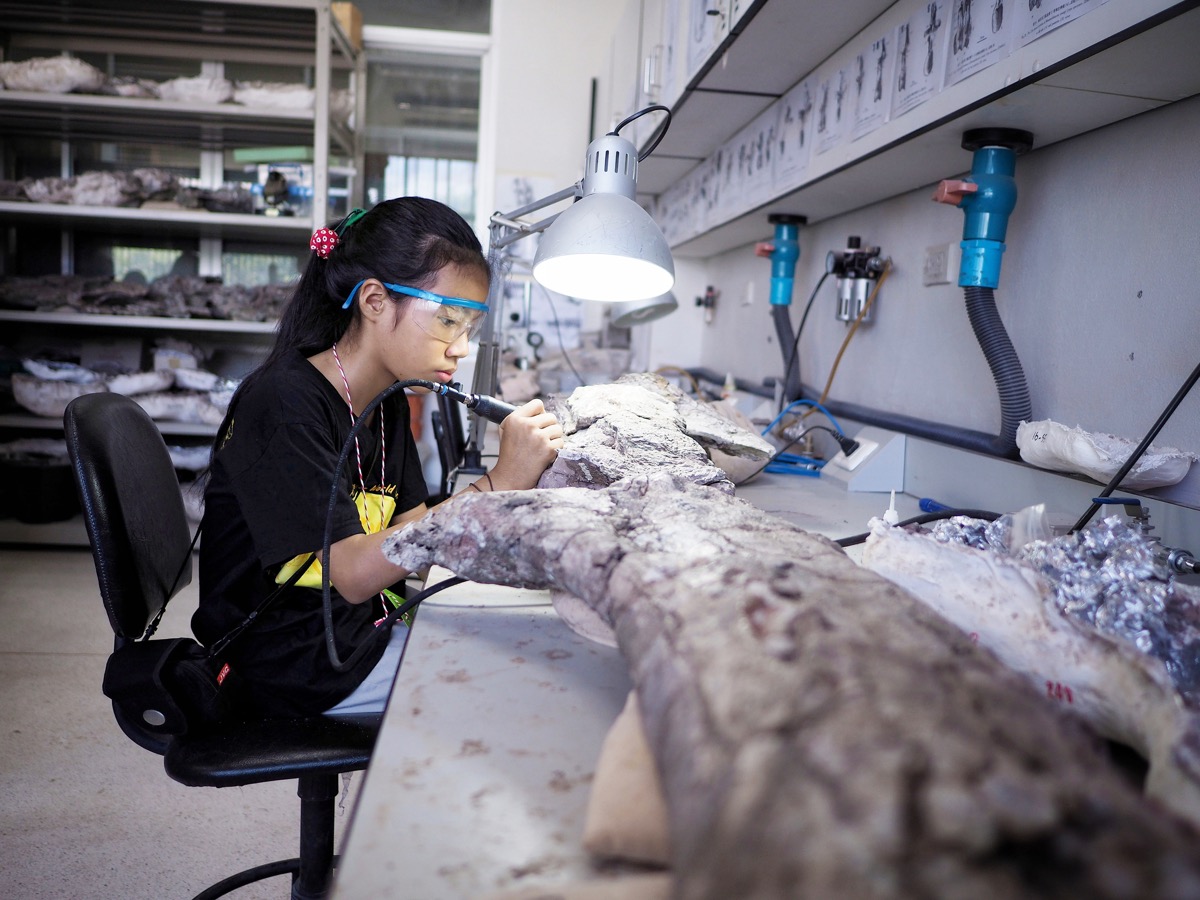
Furthermore, its back was much darker than its belly. This same colour pattern is seen in many plant-eating animals today; it makes it harder for predators to see them.
Terrible Hand
It’s pretty rare to find a whole dinosaur skeleton; usually scientists will just find bits and pieces. And with only pieces, it can sometimes be hard to figure out what the whole animal looked like.
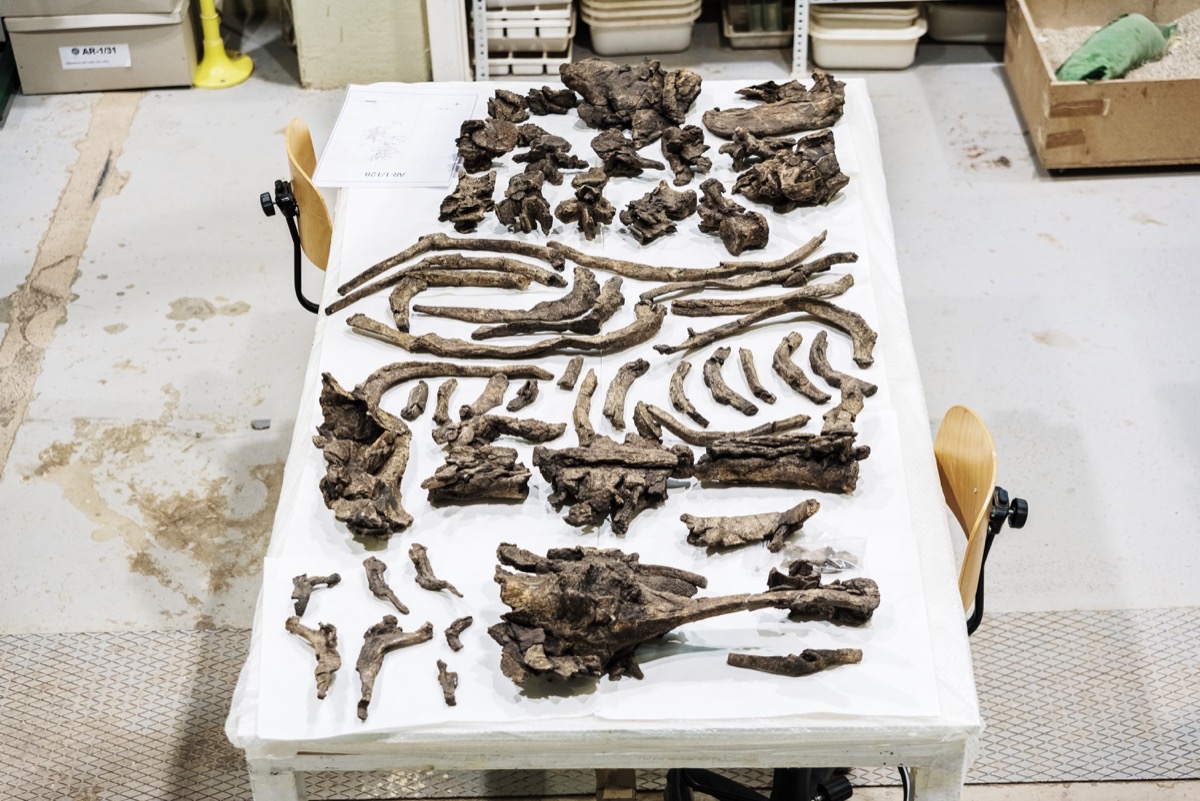
Fifty years ago, scientists in Mongolia discovered two enormous arms, each one the size of a person’s whole body, with three big claws on each giant hand. They gave this dinosaur the name Deinocheirus (“dy-no-ky-rus”), which means “terrible hand”.
What did the whole animal look like? Was it an enormous monster that could eat tyrannosaurs in a single bite?
The mystery was solved fifty years later, when scientists finally found some more complete skeletons. It turns out that Deinocheirus was a gigantic member of a family of ostrich-like dinosaurs. But unlike the rest of its family, Deinocheirus had a wide, flat beak, like a duck, and probably ate fish and freshwater plants. It also had a tall sail or hump growing from its back, and nobody knows what that was for!
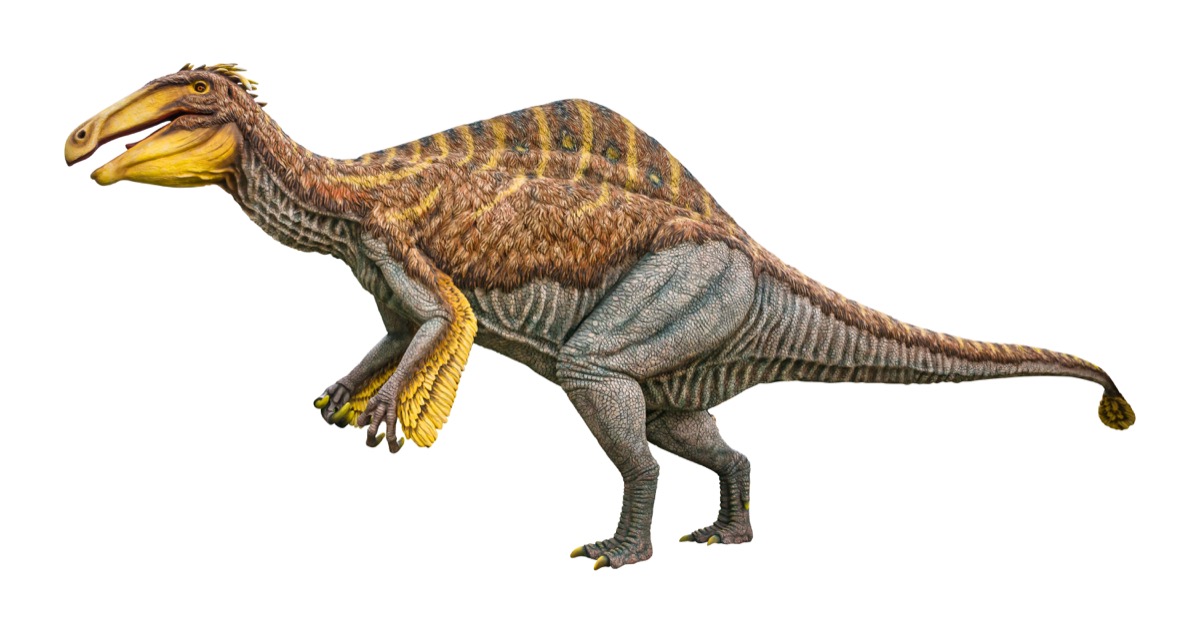
These are just three of the many exciting recent dinosaur discoveries. Who knows what we’ll learn in the next twenty years? Maybe you’ll grow up to be one of the scientists who discovers something amazing.
For more about dinosaurs, check out Caitie’s Classroom episode about dinosaurs, including her field trip to the Canadian Museum of Nature’s amazing Dinosaur Exhibit!
Don’t forget to follow us on Twitter, Instagram, Pinterest, and Facebook!
Original content © 2019 Super Simple. Not to be reprinted without express written permission. Terms of Service.

